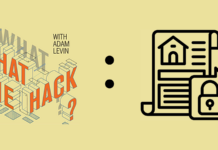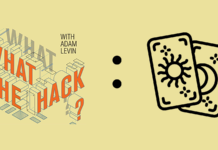
Using social networks and sharing personal information online can dramatically increase your risk for fraud, a new study has found.
It makes sense that consumers who disclose the most about themselves online are at greater risk of becoming fraud victims. But the study claims their increased risk is probably more dramatic than you’d think, and it identifies three online habits that directly lead to higher odds consumers will suffer fraud.
ID Analytics, a fraud-fighting firm, has produced numerous studies through the years examining millions of fraud reports and credit applications in data it collects from lenders. It had never studied the direct relationship between sharing information online and the odds that someone would become a fraud victim, however. Until now.
The firm examined 100,000 records involving a mix of known victims and non-victims, and then used a people search engine to log each person’s online footprint and create what the firm called an “Exposure-Fraud Score.” The results were clear. Those who shared the most about themselves — who were among the top 10 or 20% of sharers — were four times more likely to be fraud victims than those who shared the least.
“Sharing” was defined as using multiple social networks, posting personal information on websites, or landing in other online databases, for example.
The Three Predictors of Fraud
“To my knowledge, this is the first time anyone has quantified this,” said Dr. Stephen Coggeshall, chief analytics and science officer at ID Analytics.
The study also unearthed three clear predictors of becoming a fraud victim. They are, in order:
1. Number of social sites used
2. Number of websites of any kind where personal information was viewable to the public
3. Number of past addresses that can be found
The usual “correlation, not causation” caution applies to this test. It’s not clear why having numerous addresses associated with your identity might make you a more likely victim of fraud, though it’s easy to speculate. The more old addresses, the easier it is for a criminal to use one unnoticed, for example.
It’s also not clear what you can do if online data brokers sell information about your past that’s available from public records.
It is possible, however, to limit the number of social networks and websites where you post information about yourself. “The consumer message is: Be thoughtful about what you post,” Coggeshall said.
While that’s good advice — and most consumers already know it— many ignore it during their everyday Internet usage. Their actions don’t follow their intentions. (Check out these tips for better internet safety.)
“It’s called the ‘Privacy Paradox.’ There’s a lot of irrational behavior around what people say and what people do,” Coggeshall said. “There is a real conflict around behavior. People download a game or an app and just click all the buttons and say yes to everything.”
Few consider what they are giving away when they download software or start using a website. The median time spent on end-user license agreements is six seconds, Coggeshall said, citing a 2011 study published by MeasuringRU.com.
At a bare minimum, Coggeshall suggested, consumers should be wary of sharing seemingly harmless data points about themselves online. He was particularly concerned about consumers revealing their birth date, which is one essential piece of information often needed by criminals when committing identity fraud.
He wasn’t optimistic, however.
“This study suggests that consumers who continue to forfeit their privacy in favor of convenience will be at a higher risk for identity theft than the general population,” the report concludes.
How to Protect Yourself
To further guard against fraud and identity theft, follow these financial safety tips.
1. Guard your important personal information. A Social Security number is the prime example of this, although it’s important to keep things like your birthdate, credit card number and driver’s license number safe too. Only share your information with companies that you trust. And avoid carrying your Social Security card in your wallet — you have it memorized anyway (hopefully).
2. Shred private financial documents with a cross-cut shredder before recycling.
3. Avoid posting bills in your mailbox, where an identity thief can strike. Instead, place your outgoing mail in collection boxes or drop your bills and other mail at the post office.
4. Keep virus and spyware software up-to-date on your laptop and home computer and use firewall software for protection.
5. Use strong passwords to protect your accounts. And change your passwords frequently. You should also make sure you follow the advice of experts when data breaches happen – they can tell you whether you need to change your password, get credit monitoring or do more to protect your identity.
6. Get free annual copies of your credit reports from each of the major credit reporting agencies: Equifax, TransUnion and Experian.
7. Monitor your credit score. With Credit.com’s free tools, you receive two free credit scores, updated every 14 days, plus expert tips on improving your credit. An unexpected change in your credit scores could mean an identity thief has opened an account in your name.
For an added level of protection against identity theft, you may wish to sign up for a free credit monitoring service so you will receive more frequent updates of changes in your credit file. Always compare identity theft protection plans carefully to make sure you understand the service’s terms.
This article originally appeared on Credit.com and was written by Bob Sullivan.










